Whether you’re working for a small agency or a major marketing firm, you’re probably eventually going to need to fill out a Request for Proposal, or RFP.
Your company can’t do everything internally, and when your business needs to purchase a product or service from elsewhere, you might need to shop around. An RFP allows you to collect offers from various vendors and select the vendor that best meets your criteria, both in regards to skill and budget.
Any time you outsource work to a supplier, there’s a potential for issues such as miscommunication around the scope of the work and the compensation. What a good RFP does is eliminate gray areas so that both parties understand what needs to be delivered, when, and for how much.
RFP Template
Here, we’ve provided an RFP template you can follow for initial structure, as well as a sample RFP for further inspiration. But it isn’t one-size-fits-all — you’ll need to tailor your RFP to best articulate your company’s needs.
Download a free, editable RFP template.
Not that you’ve seen the template, how do you actually write an RFP? We’ve got you covered.
1. Define your project, scope, and budget.
Before issuing your RFP, take the time to define the project you’re looking to complete, its scope, and how much you can afford to spend. This information provides the framework for your RFP and helps ensure that it strikes a balance between too general and overly detailed. Not only that, but it will help potential vendors understand your priorities and tailor their proposals accordingly.
In this step, try to provide a clear and concise description. Avoid using overly technical language or industry jargon that could be confusing to potential vendors. The difference is subtle, but can make a world of a difference in helping you receive better-fit proposals. Here’s an example:
- Good: “Our company is seeking a CRM system that integrates with our existing marketing automation software and provides real-time reporting. The solution should be easy to use and scalable to accommodate our growing customer base. Our budget for this project is $50,000.”
- Not-so-good: “Our company wants to implement a customer relationship management (CRM) system that integrates with our existing marketing automation software and provides real-time reporting capabilities for our sales team to understand customer data more quickly and efficiently. The solution should be scalable and flexible to accommodate our growing customer base, and it should be easy to use for non-technical team members.”
You can see how the good version provides a clear and concise description of the services needed, budget, and key requirements, while avoiding overly technical language and jargon that could be confusing. This makes it easier for vendors to understand what is required and craft a proposal that meets your needs.
2. Provide background and introductory information.
With budget and scope in hand, you can start crafting your RFP. While it’s tempting to dive right into the details, it’s a good idea to provide some background and introductory data about your company. This helps set the stage for potential partners by giving them a sense of your current market, business goals, and current challenges.
Here are three tips for adding background and introductory information to your RFP:
- Provide a company overview: Start the RFP by providing a high-level overview of your company, including your history, mission, vision, and current market position. This information helps vendors understand more about your business goals and provides context for the project. Vendors can use this information to tailor their proposals to your organization’s values and objectives.
- Highlight current challenges and opportunities: We cover this in detail later, but it bears repeating: List the current challenges you’re facing, along with opportunities you’d like to capitalize on. This information helps vendors understand specific areas of need and provide new or better options for you.
- Provide contact information: Be sure to provide an email address and phone number that vendors can use to submit questions about your RFP.
By providing an overview of your company’s history, highlighting current challenges and opportunities, and providing clear contact information, you can help prospective vendors craft a tailored proposal that aligns with your organization’s goals.
3. Describe the services you’re looking for.
Now it’s time to get specific about the services you’re looking for to help achieve your goals. For example, if you’re building a website, you might look for a company with both front-end and back-end development experience. If you’re creating a mobile app, highlight the need for specific skills in that area, such as expertise in responsive design and building applications for multiple mobile platforms.
You can take various approaches when describing the services you’re seeking in an RFP, but we always recommend incorporating bullet points or breaking up your information so that it’s easy for vendors to scan. Here are two examples.
RFP for Content Marketing Services: Our company is looking for an agency to develop a unique content marketing strategy tailored specifically to our consumer base. The goal of this project is to attract and engage new customers while retaining current ones. Our ideal vendor:
- Has experience in creating content in various formats such as blog posts, social media, infographics, and videos
- Has experience in SEO optimization, keyword research, and content distribution
- Can leverage data and analytics to improve content performance
RFP for Video Production Services: Our brand’s content team is looking for a video production company to produce a series of videos for our YouTube channel. Our goal is to build brand awareness, drive web traffic, and increase our YouTube marketing ROI. The ideal vendor:
- Has experience in producing high-quality videos across various formats such as live-action, animation, screencast, whiteboard, and educational video
- Can provide a highly responsive, collaborative, and transparent communication process
- Has a clear process from ideation, production, revision, and final delivery
4. Explain any challenges or barriers to success for the project.
During the bidding process, it is crucial to be transparent about your project’s potential barriers to success. By doing so, you give potential partners and vendors the opportunity to offer solutions to these challenges.
Otherwise, partners or vendors may not fully understand the scope of the project and any potential difficulties that may arise. This lack of knowledge could lead to delayed timelines, increased costs, or ultimately, project failure.
Additionally, withholding the barriers to success could result in a lack of trust between your company and the vendor team. This may lead to misaligned expectations and misunderstandings. But by being transparent about the potential barriers to success, you can increase the likelihood of finding the right vendor and completing the project successfully.
5. Detail your selection criteria.
Next up are the selection criteria. Here, you can highlight which skills, services, and market expertise are required for consideration. This is the time to get specific: Clear descriptions of selection criteria will help reduce the risk of sorting through multiple proposals that don’t meet your needs.This will help you make an informed decision when selecting the best vendor for the project.
Specifying the selection criteria early on in the process improves transparency. If vendors don’t meet the criteria, they won’t submit a proposal, or they can optimize their proposals to meet your needs. This eliminates ambiguity, confusion, and frustration on both sides, and avoids unnecessary back and forth.
Plus, evaluating vendors against the selection criteria also ensures that the project is awarded based on objective judgment rather than on subjective opinion.
Some examples of selection criteria that you can specify in an RFP are:
- Experience: The vendor should have extensive experience in delivering projects similar to the one described in your RFP.
- Qualifications: The vendor should be able to demonstrate their expertise in the relevant technology, software, or methodology required to complete your project.
- Cost: The vendor should provide detailed pricing and be able to demonstrate how their proposal fits within your budget.
- References: The vendor should provide references from past clients who have used their services for similar projects.
- Methodology: The vendor should outline their approach to managing your project, including project management processes, resources management, and project delivery timelines.
- Availability: The vendor should provide details of their capacity to take on the project, the availability of their resources, and an expected delivery timeline.
- Team Profiles: The vendor should include detailed profiles of the members of the team assigned to deliver the project, highlighting their experience in relevant areas and their qualifications.
- Technical compatibility: The vendor should be able to ensure compatibility with other technologies or systems used by your organization, such as other software solutions or APIs.
6. Specify your project’s timeline.
It’s also important to be up-front about your timelines. Give potential partners an end date for RFP submission, a date for final selection, and a clear start-to-finish project timeline so companies making a proposal can fine-tune their bid. This will also help you narrow down the pool of potential vendors and ensure that the project is completed on time.
A timeline benefits everyone throughout the bidding process. With a timeline in place, vendors receive clear guidance on when your project must be completed and can plan their resources accordingly, ensuring timely delivery. The vendor can also communicate the necessary deadlines to their team, minimizing the risk of delays and ensuring that your project is delivered successfully.
Here’re an example of what a timeline can look like, but remember that it will vary depending on your RFP’s format, as well as your target vendors’ industries:
“The marketing department at HubSpot is looking to hire a digital marketing agency to help with a new advertising campaign. Proposals must be submitted by August 1st and the campaign launch must occur no later than September 15th, in time for the back-to-school season.”
7. Proofread your RFP and go live.
Last but never least? Proofread your RFP — then proofread it again. Why? Because even small mistakes could derail project timelines. Consider a zero missing in your budget details, or a miscommunication about the dates that proposals are due and selections are made; both could force a restart of the entire RFP process and waste precious time.
Remember that your goal is to invite as many proposals as possible, and to make it simple for vendors to respond. An accidental typo, such as a project name that you forgot to replace or incorrect contact information, can make it that much harder to increase your response rate.
Once you’re satisfied that everything on your RFP is accurate and complete, it’s time to go live. Send out emails and post links on your site to start the process of finding your best-fit provider. To streamline this process, consider proposal software to publish and manage responses to your RFP.
Now that you understand the basics of writing an RFP, you can build your own template and then fill it out so that you can start accepting bids. We’ll use a fictitious company, Caroline’s Websites, Inc., to illustrate exactly how each section should be executed.
RFP Sample
 Project Name or Description: Marketing Services
Project Name or Description: Marketing Services
Company Name: Caroline’s Websites, Inc.
Address: 302 Inbound Ave.
City, State, Zip Code: Boston, MA 29814
Procurement Contact Person: Caroline Forsey
Telephone Number of PCP: 227-124-2481
Email Address of PCP: [email protected]
Fax Number: N/A
Next, we’ll go into each of the elements of the RFP with information using the same fictitious company.
1. Write your background and introduction.
In your introductory paragraph, you’ll want to include useful background information about your company — who founded it, what product or service your company offers, what sets you apart from competitors, and where you’re located. If any vendor is serious about working with you, they’ll want this information before moving forward.
Example
Caroline’s Websites, Inc. is a web design firm created by Caroline Forsey in 2010. Caroline’s Websites, Inc. prides itself on a team-oriented, solutions-based approach to web design. We provide our clients with web design services including coding, development, and branding. Our staff is located in two offices in Massachusetts.
2. Define your project goals and scope of services.
Next, you’ll want to outline the project you need completed, and the goals you expect to accomplish from the project. It’s important you get as specific as possible — even outlining individual tasks and criteria involved. You’ll want to include phrases such as “The award will be given to X firm,” with the “X” establishing how you’ll determine the best candidate.
Example
Caroline’s Websites, Inc. is seeking the services of a full-service communications and marketing firm to develop and execute a comprehensive integrated marketing plan that increases our SEO presence; attracts more social media followers; and effectively completes a lead generation campaign. The award will be made to a responsive and responsible firm based on the best value and professional capability.
The selected firm will be responsible for the development and implementation of a comprehensive and cost-effective marketing plan.
Tasks include but may not be limited to the following criteria:
- Lead generation campaign
- Paid media strategy
- Production of creative material including collateral and direct mail
- Online marketing campaign
- Website enhancement
- Search engine optimization
- General account management
- Other communications and/or marketing-related assistance as required
3. Detail your anticipated selection schedule.
It’s crucial you include a detailed schedule so vendors know if they can meet your deadlines. You’ll also need to give vendors a window for when they can ask questions regarding your project.
Example
The Request for Proposal timeline is as follows:
Request for RFP: June 1, 20XX
Deadline for Bidders to Submit Questions: July 5, 20XX
[Company Name] Responds to Bidder Questions: July 20, 20XX
Selection of Top Bidders / Notification to Unsuccessful Bidders: July 31, 20XX
Start of Negotiation: August 5, 20XX
Contract Award / Notification to Unsuccessful Bidders: August 31, 20XX
4. Describe the time and place for the submission of proposals.
Similar to paragraph #3, this is important information you’ll want to clearly present, so vendors know how and where to submit themselves for consideration.
Example
The RFP will be posted on our website, Carolinewebsites.com, and can be downloaded from there directly as of 10 a.m. on June 1, 20XX.
Respondents to this RFP must submit one original and five copies of their proposal. Responses must be received no later than July 25, 20XX. Responses should be clearly marked “RFP-MarketingServices” and mailed or delivered to the contact person listed above.
5. Clearly define your timeline.
By including a time frame in your RFP, you’re able to eliminate any vendor who can’t work within your time constraints. If you’re flexible on your time, you can write something like, “Our company hopes to finish the project within six months, but we’re open to negotiation for the right candidate.”
Example
Caroline’s Websites, Inc. needs the project completed within 8 months.
6. Specify the key elements of a proposal.
If you don’t outline clearly and specifically what you expect bidders to include in their proposal, you can’t necessarily fault them if they don’t include it. It’s critical you outline a checklist so vendors know which elements you’re expecting to receive. It’s also a good test for who’s capable of handling your demands — if a vendor can’t complete all elements of your proposal, you probably can’t trust them to finish your project, either.
Example
A submission must, at a minimum, include the following elements:
- Description of the firm that includes a general overview, names and credentials of creative team, number of full-time employees.
- A one-page narrative outlining the firm’s strengths and distinguishing skills or capabilities as they might relate to Caroline’s Websites, Inc.
- A representative selection of social media ads, direct response material, collateral, and website development created for current and past clients.
7. Make your evaluation criteria clear.
Outlining your expectations will help eliminate vendors who don’t meet them. For this section, you’ll want to do some brainstorming with your team to come up with a mandatory list of items you feel are the best indicators of impressive candidates. Your list could include samples of past work, a proven success record with companies in similar industries, the expertise and technical skills to meet your demands, and a cost of services within your price range.
Example
The successful respondent will have:
- Experience working as a marketing agency for a minimum of 24 months and possess full-service, in-house capabilities for marketing, creative services, production, media planning and placement, direct response, and research.
- The education, experience, knowledge, skills, and qualifications of the firm and the individuals who will be available to provide these services.
- The competitive cost of services.
- The expertise of the firm in working with similar customers.
8. Describe any possible roadblocks.
Here, you’ll want to outline any roadblocks, such as limited resources or a custom website, that might prevent certain vendors from successfully completing the project. This allows you to eliminate unsatisfactory bidders, and it will also help you determine which vendors have the skills and expertise to tackle those challenges.
Example
At this time, Caroline’s Websites, Inc. currently has custom coding on our website, of which bidders should be aware.
9. State your budget for the project.
Any vendor needs to know how much you’re able to pay them for their services before they’ll move forward with their bid.
Example
Caroline’s Websites, Inc.’s budget for the project is $8,750.00.
These elements were written in a way to clarify the scope of the project that Caroline’s Websites, Inc. wants completed so that suppliers know whether or not to make a bid. Defining the project allows the bidder to determine if they’re a good fit and how much they’d likely charge. Being as transparent as possible serves to benefit (and even protect) both parties in the long run.
Tips for Writing an RFP
There are several key actions that you can take to increase the likelihood of a vendor responding to your RFP. At the same time, certain factors can cause a vendor to be less likely to respond.
Here are some tips to help you optimize your RFPs to achieve a high response rate from vendors.
1. Provide open lines of communication.
If you establish open communication lines with vendors during the bidding process, you’re more likely to see a higher response rate. Why? Providing access to a point of contact — or establishing a schedule for conference calls or in-person meetings — can show that your company is invested in the vendor response process.
We also recommend purposefully asking your prospective vendors to seek clarification. Encourage them to ask questions about the RFP and the project itself. The more they understand your needs, the better their proposals will be, and the easier it will be for you to make an informed decision.
2. Don’t skimp on project details, but keep it brief and scannable.
Vendors are less likely to respond to RFPs if the project details are insufficient or unclear. If you don’t provide detailed instructions and requirements for your project, vendors may interpret the project scope differently, causing them to submit proposals that do not specifically address your needs.
Conversely, vendors are more likely to respond to RFPs that provide well-defined project goals and timelines, because that allows them to better evaluate their abilities and provide informed proposals.
That said, you want to keep your information as scannable as possible. Take advantage of formatting options such as bullet points and headings. A vendor is likely flipping through many RFPs in a day, so you want them to get the information they need after a brief scan of your document.
3. Establish a competitive budget and ample deadline.
Vendors are more likely to be interested in responding to your RFP if they feel that their pricing is competitive, and if they feel that your deadline and timeline is reasonable for the project’s specifications.
On the other hand, vendors may be hesitant to send you a proposal if there is a short deadline, or if the timeline is particularly compressed. This could indicate that your company is not allowing enough time for vendors to conduct research and submit accurate proposals.
4. Research your target vendor’s industry and marketplace.
Have you ever bought a piece of software that you know nothing about? Us, either, and we wouldn’t recommend you do the same when considering submitted proposals to your RFPs.
Researching the vendor marketplace beforehand can help you develop more realistic budgets, timelines, and goals. You can create highly specific selection criteria and better identify which vendors will most likely meet your budget and time constraints.
With insufficient knowledge about the market, you could accidentally underestimate the resources required for your project, or set unrealistic timelines and expectations. This miscommunication can misguide vendors, leading them to either submit a proposal that is not a good fit or entirely opt out of bidding.
As the name makes clear, RFIs are about collecting information. They’re used by companies to get a sense of what solutions are on the market and how the companies that offer these solutions could help solve a key problem or complete a key task. RFIs ask companies to submit data about what they do, what they offer, and how they can help achieve specific goals.
RFPs, meanwhile, follow RFIs. Using the information obtained from RFIs, companies build RFPs that detail exactly what they’re looking for, how much they’re planning to spend, and how vendors will be selected. In effect, RFIs help narrow the scope of RFPs to help streamline the selection process.
Worth noting? There’s also another option if you know exactly what product or service you’re looking for: Request for quote (RFQ). Unlike an RFP, which asks potential partners to submit a proposal based on their expertise and experience, an RFQ is about cost: You’re asking a specific vendor what it would cost to deliver “X” service or solution in “Y” timeframe under “Z” conditions.
Realizing Best Results for Your RFP
Your RFP sets the stage for companies to bid on projects that are outside the scope of your internal expertise — but are still critical for your business to succeed.
As a result, it’s worth making sure your RFP is clear, concise, and captures the key details about your needs to help find the best-fit partner for your project. Not sure where to start? Grab a copy of HubSpot’s free RFP template, follow the steps above, and get your projects underway.
Editor’s note: This post was originally published in June 2018 and has been updated for comprehensiveness.
![]()




![Download Now: Free Marketing Plan Template [Get Your Copy]](https://i4lead.com/wp-content/uploads/2023/05/aacfe6c7-71e6-4f49-979f-76099062afa0.png)


![The Social Media Content Calendar Template Every Marketer Needs [Free Template]-4](https://i4lead.com/wp-content/uploads/2023/05/The2520Social2520Media2520Content2520Calendar2520Template2520Every2520Marketer2520Needs25205BFree2520Template5D-4.jpg)

 Online Marketing Tips for Small Businesses
Online Marketing Tips for Small Businesses
![→ Free Templates: How to Use YouTube for Business [Download Now]](https://i4lead.com/wp-content/uploads/2023/05/b33cfd44-133a-49e3-a943-086c5679d485-1.png)




 We also recommend using hashtags in your YouTube description, but don’t go overboard; the YouTube algorithm constantly checks for spam. Overly hashtagging may get you inadvertently flagged. Instead of using every hashtag you can think of, choose 2-3 that you feel most accurately describe your video.
We also recommend using hashtags in your YouTube description, but don’t go overboard; the YouTube algorithm constantly checks for spam. Overly hashtagging may get you inadvertently flagged. Instead of using every hashtag you can think of, choose 2-3 that you feel most accurately describe your video. For example, Yoga with Kassandra grouped all of its short yoga classes in a playlist titled “
For example, Yoga with Kassandra grouped all of its short yoga classes in a playlist titled “ Be sure to leave an engaging comment that furthers the conversation or offers more value for readers. Here at HubSpot, for example, we leave a resource pinned so that viewers can further their knowledge on the topic. Check out this post for more on
Be sure to leave an engaging comment that furthers the conversation or offers more value for readers. Here at HubSpot, for example, we leave a resource pinned so that viewers can further their knowledge on the topic. Check out this post for more on 
 4. Include the keyword, as well as keyword variations, in the video description. The video description is the lifeblood of your YouTube SEO strategy. Write a natural description with 1-2 mentions of your target keyword, as well as variations of this keyword.
4. Include the keyword, as well as keyword variations, in the video description. The video description is the lifeblood of your YouTube SEO strategy. Write a natural description with 1-2 mentions of your target keyword, as well as variations of this keyword.

 8. Add subtitles and closed captions. Subtitles and closed captions are a much-needed accessibility component of your videos. They also indirectly help you optimize for YouTube search by giving YouTube a text version of your video content.
8. Add subtitles and closed captions. Subtitles and closed captions are a much-needed accessibility component of your videos. They also indirectly help you optimize for YouTube search by giving YouTube a text version of your video content.
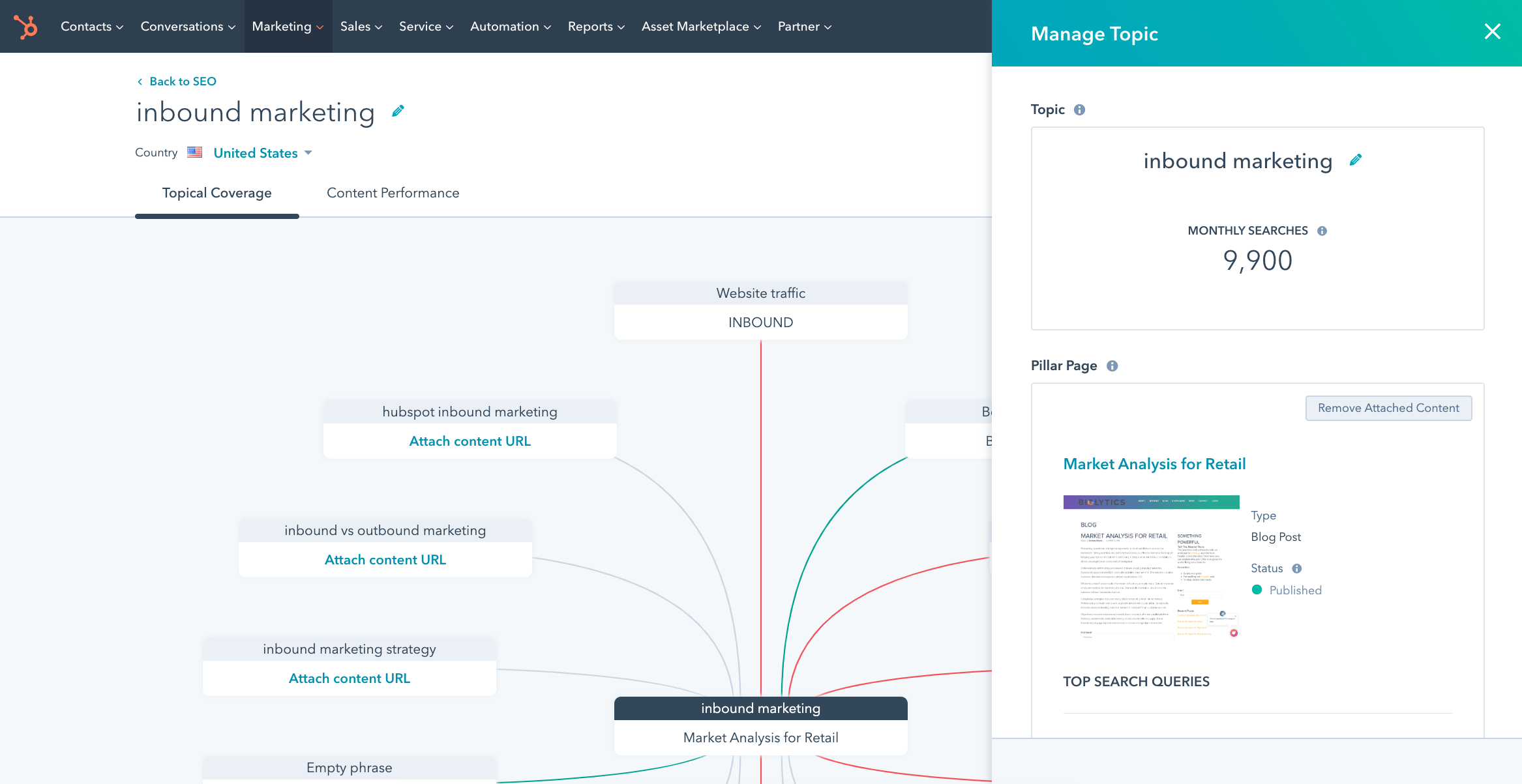
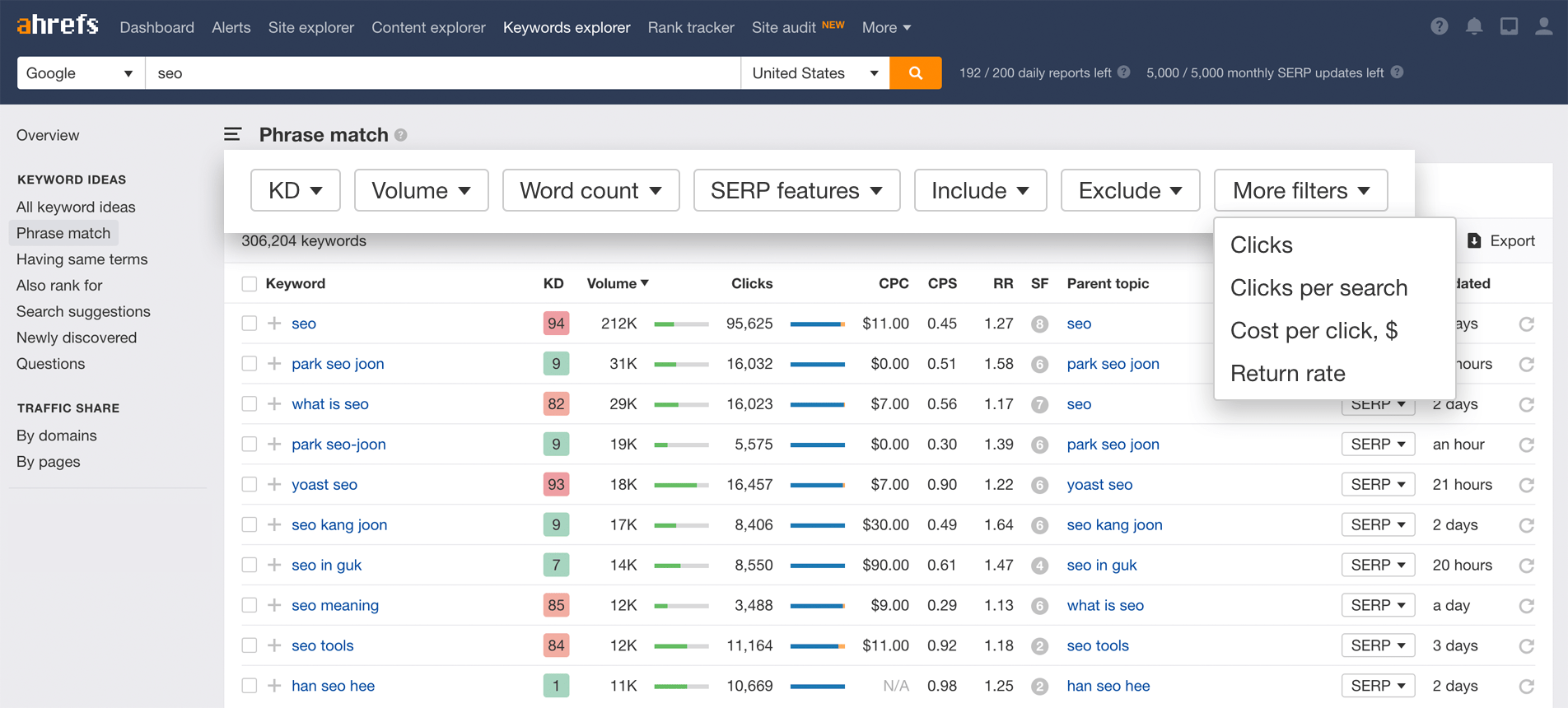

 This is a Chrome extension, available through Chrome’s web store in the link above, that helps you analyze how and why certain YouTube videos perform so well. This includes the tags a video has been optimized for, its average watch time, and even how quickly that video might be gaining traffic.
This is a Chrome extension, available through Chrome’s web store in the link above, that helps you analyze how and why certain YouTube videos perform so well. This includes the tags a video has been optimized for, its average watch time, and even how quickly that video might be gaining traffic. TubeBuddy is an all-in-one video platform that helps you manage the production, optimization, and promotion of your YouTube content. Its features include an automatic language translator (which helps you rank for non-English keywords), a keyword explorer, tag suggestions, a rank tracker for your published videos, and more.
TubeBuddy is an all-in-one video platform that helps you manage the production, optimization, and promotion of your YouTube content. Its features include an automatic language translator (which helps you rank for non-English keywords), a keyword explorer, tag suggestions, a rank tracker for your published videos, and more.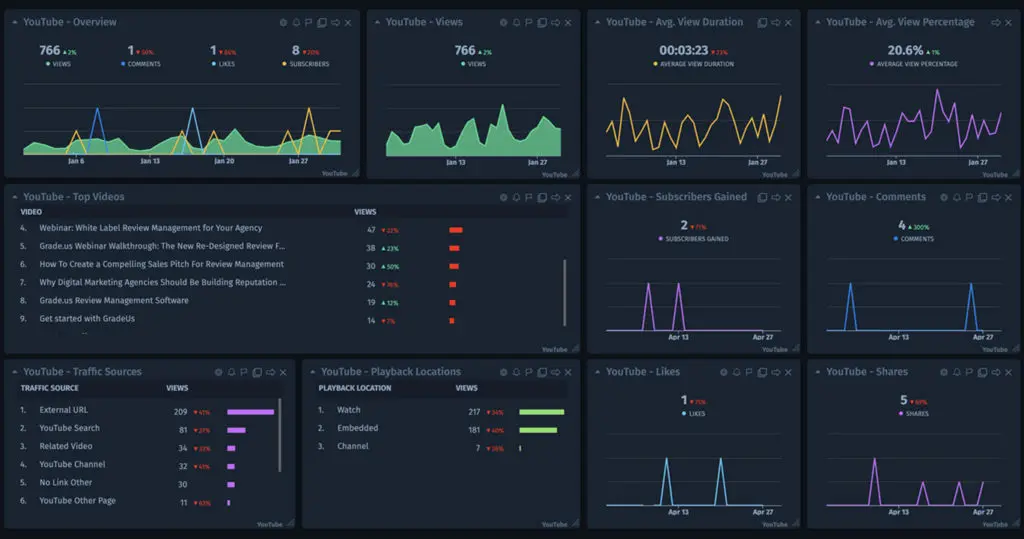 Cyfe is a large software suite that offers, among other things, a YouTube analytics platform. On this platform, you can track performance on YouTube and on your site.
Cyfe is a large software suite that offers, among other things, a YouTube analytics platform. On this platform, you can track performance on YouTube and on your site.



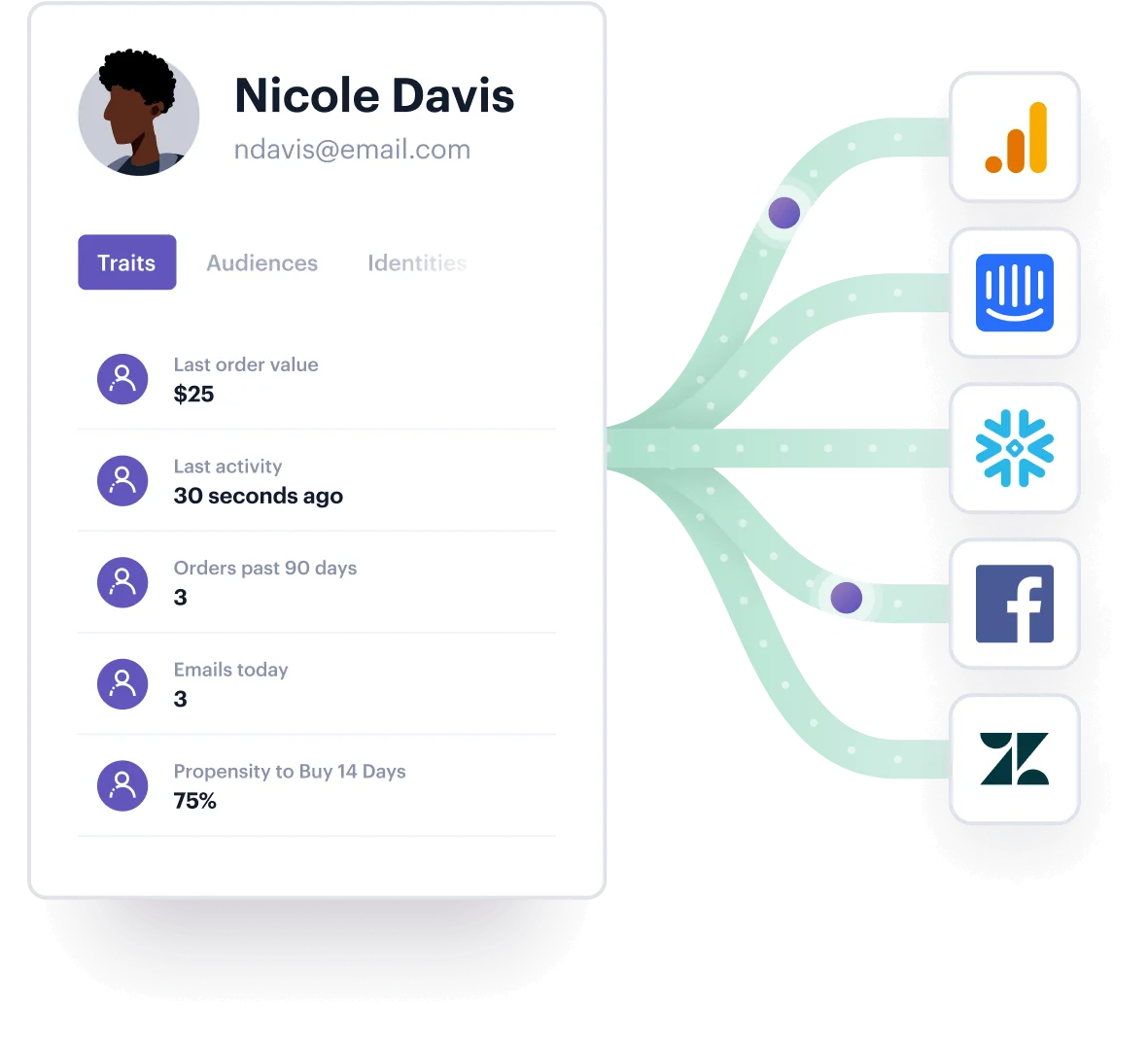



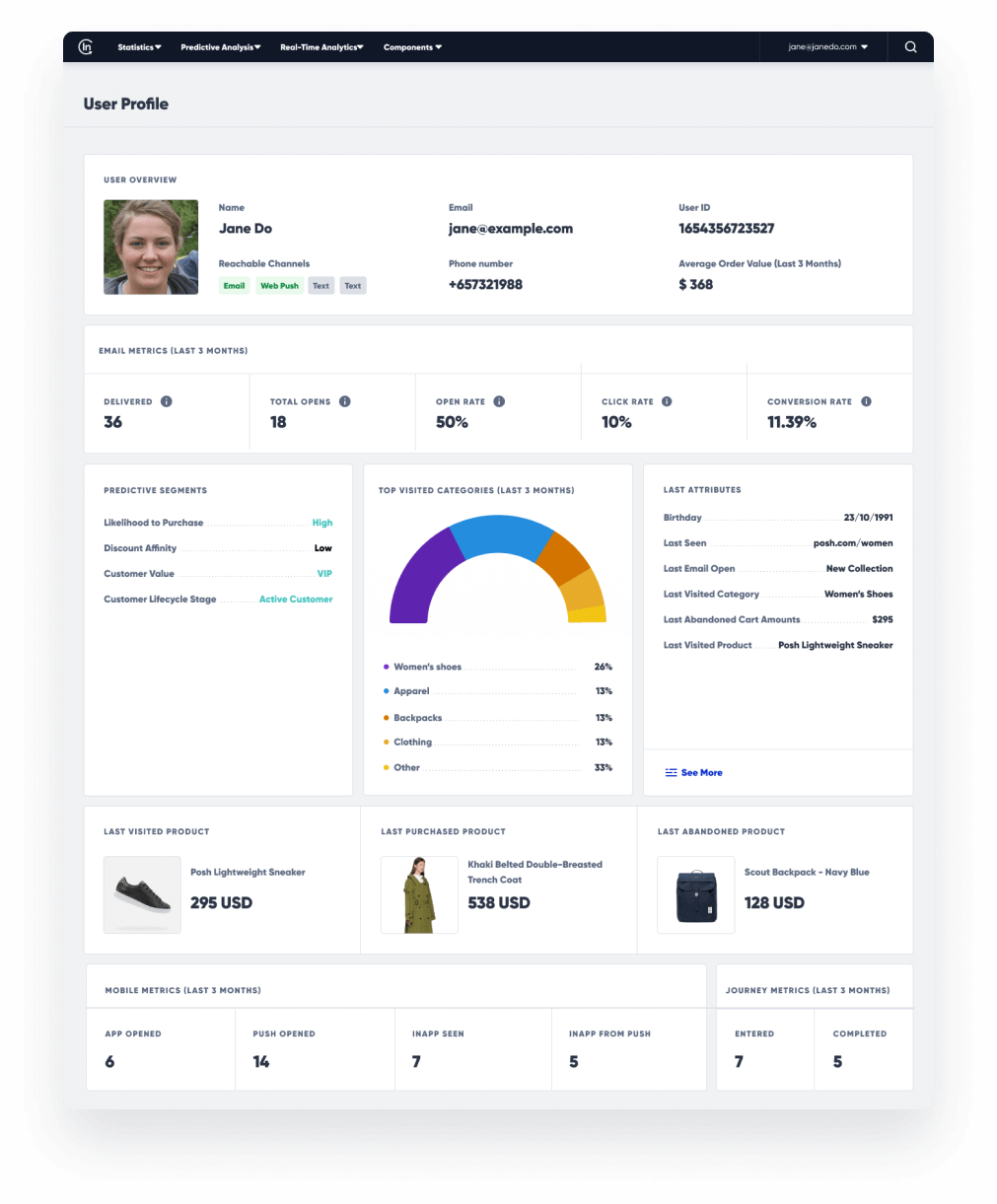

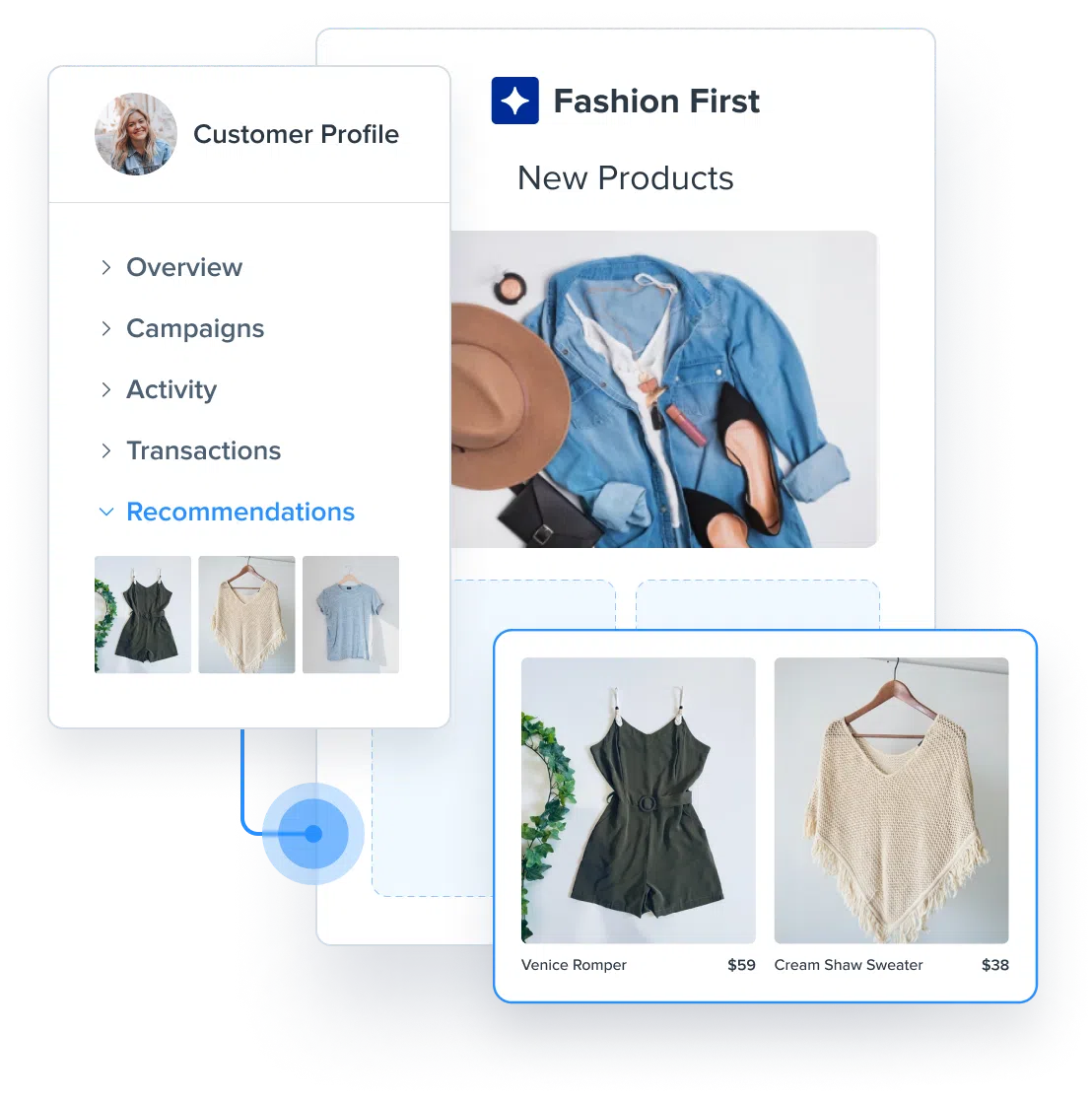




![→ Click here to access 5 free cover letter templates [Free Download]](https://i4lead.com/wp-content/uploads/2023/05/3f347702-d7e9-4e59-9fe4-be4cd7bad191.png)





.png)





 Edens knows that the body of the email is prime real estate to get the hiring manager’s attention, but she also doesn’t want to overwhelm the recipient with too much information since a cover letter was not requested. This short cover letter is the result. You’ll notice that she uses casual and breezy language to convey personality and enthusiasm, and she keeps her paragraphs succinct.
Edens knows that the body of the email is prime real estate to get the hiring manager’s attention, but she also doesn’t want to overwhelm the recipient with too much information since a cover letter was not requested. This short cover letter is the result. You’ll notice that she uses casual and breezy language to convey personality and enthusiasm, and she keeps her paragraphs succinct.


 In this cover letter example, the applicant is pivoting to a career in UX. Not only does she make the case for why she should be hired, she shows the recruiter by using a simple, but effective design scheme that shows off her skills. It’s clean but effective.
In this cover letter example, the applicant is pivoting to a career in UX. Not only does she make the case for why she should be hired, she shows the recruiter by using a simple, but effective design scheme that shows off her skills. It’s clean but effective.












![Download Now: 10 Competitive Analysis Templates [Free Templates]](https://i4lead.com/wp-content/uploads/2023/05/b3ec18aa-f4b2-45e9-851f-6d359263e671.png)






![Free Guide: How to Use AI in Content Marketing [Download Now]](https://i4lead.com/wp-content/uploads/2023/05/3e25e192-30c3-40c1-a7da-a4d054c9e157-11.png)
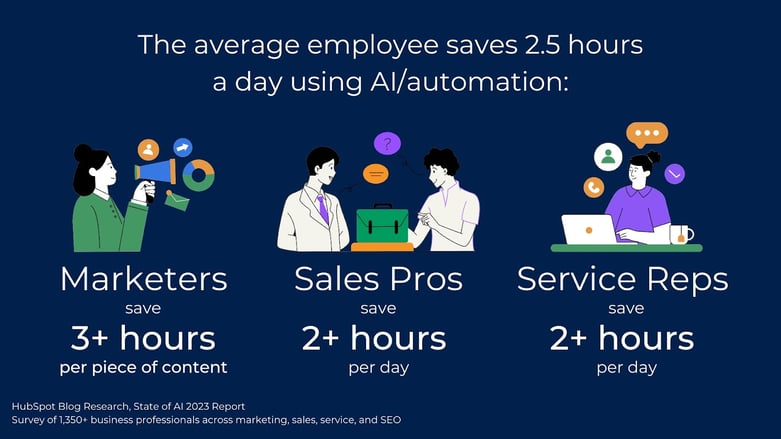

![The HubSpot Blog’s State of AI Report [New Data]-May-15-2023-03-14-33-0703-PM](https://blog.hubspot.com/hs-fs/hubfs/Google Drive Integration/The HubSpot Blog’s State of AI Report [New Data]-May-15-2023-03-14-33-0703-PM.jpeg?width=1600&height=900&name=The HubSpot Blog’s State of AI Report [New Data]-May-15-2023-03-14-33-0703-PM.jpeg)
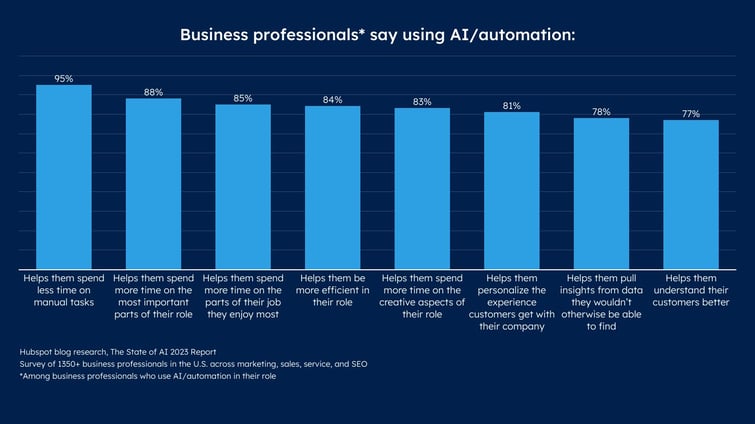
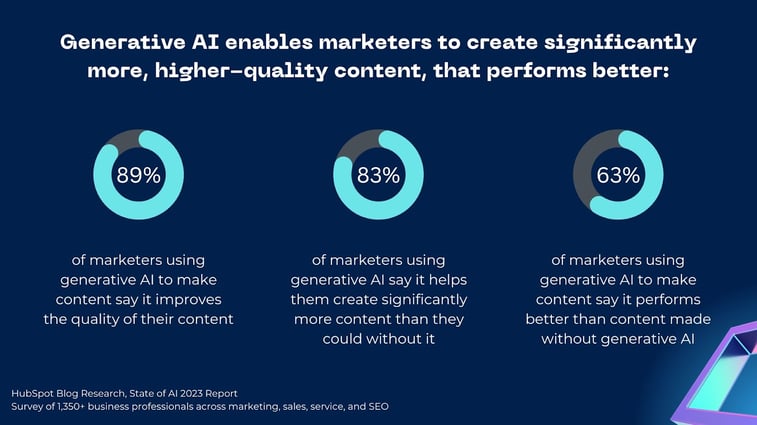
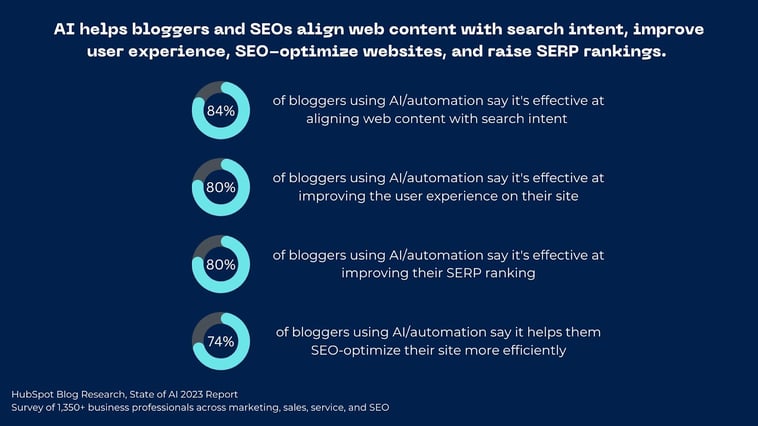

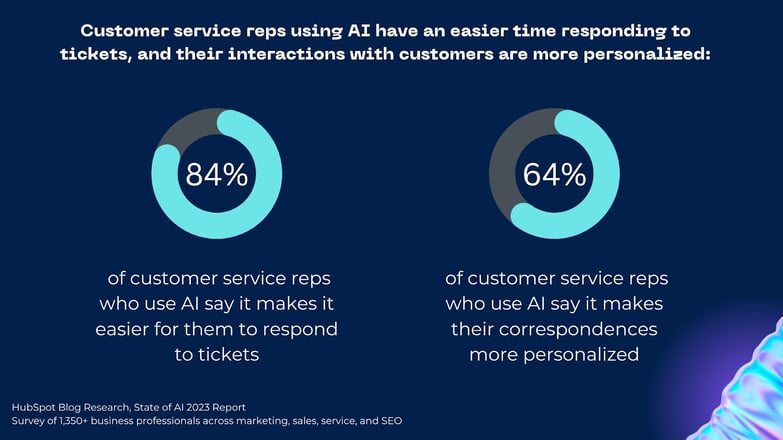

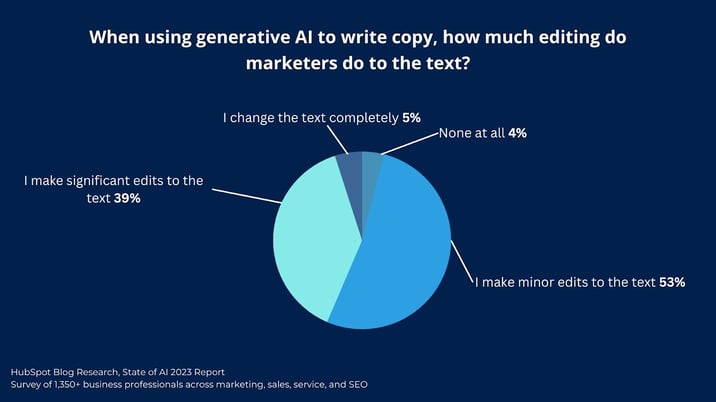



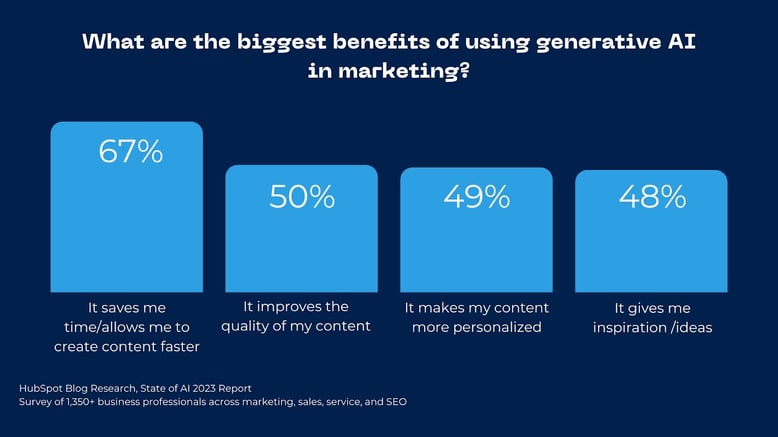

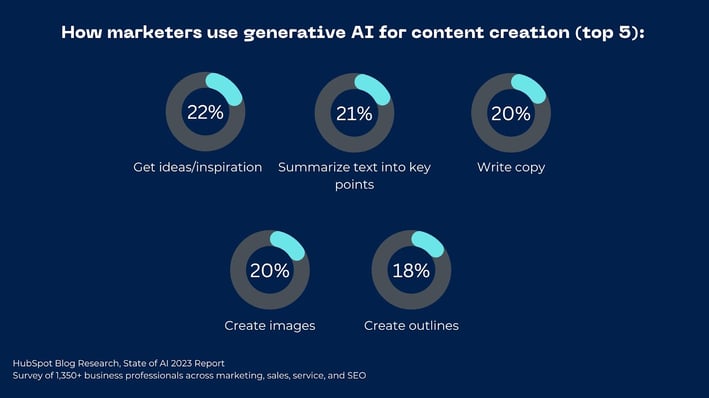



![The HubSpot Blog’s State of AI Report [New Data]-May-15-2023-03-14-32-8343-PM](https://blog.hubspot.com/hs-fs/hubfs/Google Drive Integration/The HubSpot Blog’s State of AI Report [New Data]-May-15-2023-03-14-32-8343-PM.jpeg?width=1600&height=900&name=The HubSpot Blog’s State of AI Report [New Data]-May-15-2023-03-14-32-8343-PM.jpeg)
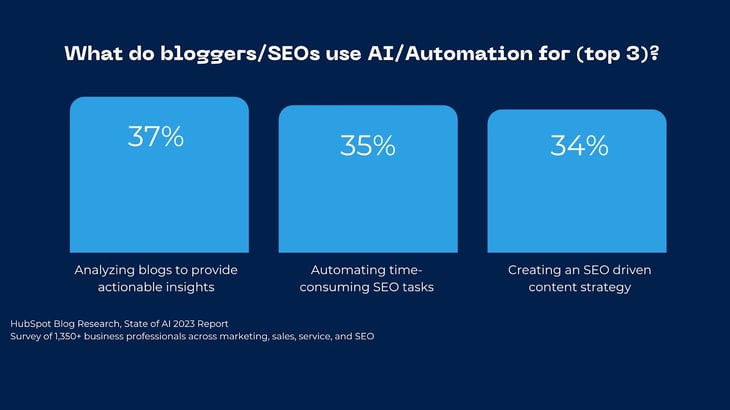
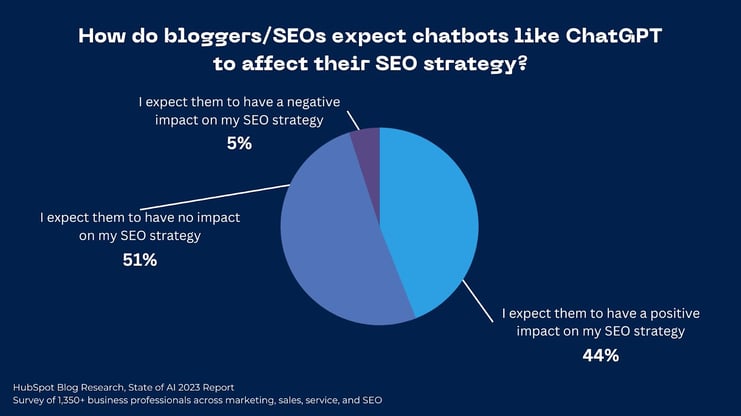
![The HubSpot Blog’s State of AI Report [New Data]-May-15-2023-03-14-33-7621-PM](https://blog.hubspot.com/hs-fs/hubfs/Google Drive Integration/The HubSpot Blog’s State of AI Report [New Data]-May-15-2023-03-14-33-7621-PM.jpeg?width=1600&height=900&name=The HubSpot Blog’s State of AI Report [New Data]-May-15-2023-03-14-33-7621-PM.jpeg)

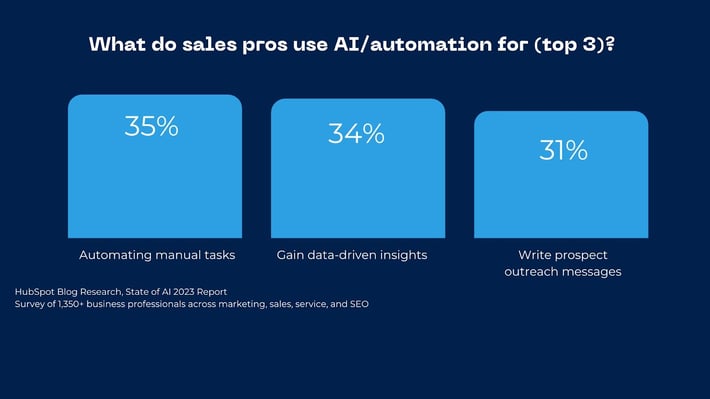
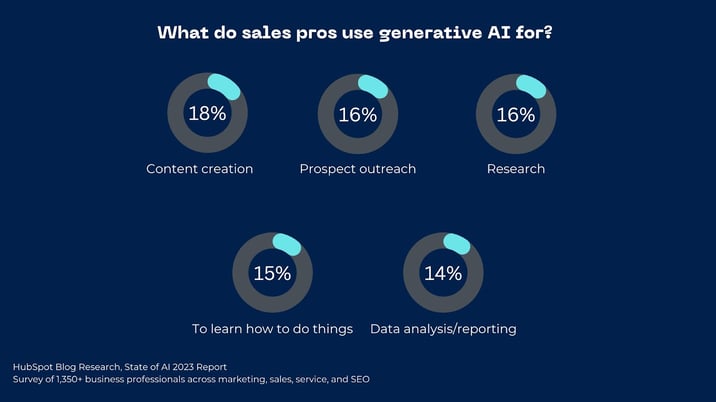


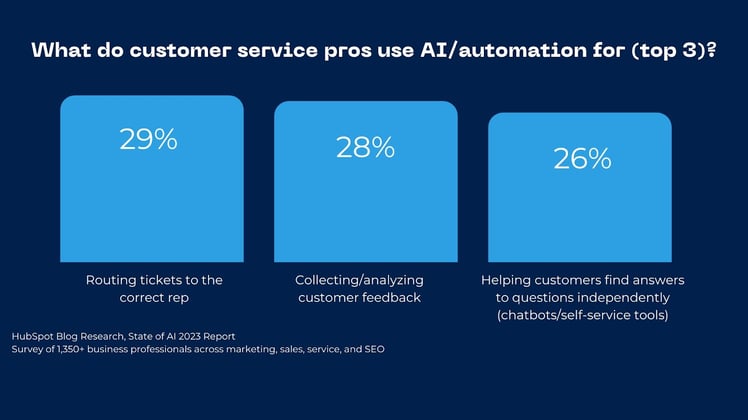

![→ Access Now: Google Sheets Templates [Free Kit]](https://i4lead.com/wp-content/uploads/2023/05/e7cd3f82-cab9-4017-b019-ee3fc550e0b5-3.png)
 Or this one:
Or this one: You likely chose the second option — where the wrap text feature is enabled for all cells.
You likely chose the second option — where the wrap text feature is enabled for all cells. Step 2: Click the “Format” tab from the menu bar. Then, pick the “Wrapping” option from the drop-down menu.
Step 2: Click the “Format” tab from the menu bar. Then, pick the “Wrapping” option from the drop-down menu. Step 3: Finally, click on “Wrap.”
Step 3: Finally, click on “Wrap.” Step 4: You’re all set! There’s nothing else to do. The wrap text feature will be applied to all the chosen cells, providing a more organized view of the content.
Step 4: You’re all set! There’s nothing else to do. The wrap text feature will be applied to all the chosen cells, providing a more organized view of the content. Step 2: Next, select the “text wrapping” icon in the toolbar, which can be found to the right of the alignment buttons.
Step 2: Next, select the “text wrapping” icon in the toolbar, which can be found to the right of the alignment buttons. Step 3: Choose the middle icon that looks like an upside-down undo button from the three options that pop up, and you’re good to go.
Step 3: Choose the middle icon that looks like an upside-down undo button from the three options that pop up, and you’re good to go.
 Step 2: A box will pop up. Click on the “Cell” option, which will allow you to edit different elements of the selected cells (note: the default is the “text” option).
Step 2: A box will pop up. Click on the “Cell” option, which will allow you to edit different elements of the selected cells (note: the default is the “text” option). Step 3: Scroll down until you find the “Wrap text” option. Slide the switch to the on position, and you’re done. So, there it is — a simple tutorial on how to make the text fit on Google Sheets from your mobile device.
Step 3: Scroll down until you find the “Wrap text” option. Slide the switch to the on position, and you’re done. So, there it is — a simple tutorial on how to make the text fit on Google Sheets from your mobile device. Does wrapping text make a difference?
Does wrapping text make a difference?
![Free Guide: How to Use AI in Content Marketing [Download Now]](https://i4lead.com/wp-content/uploads/2023/05/3e25e192-30c3-40c1-a7da-a4d054c9e157-10.png)





